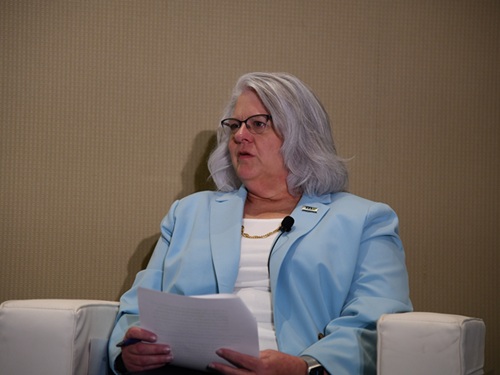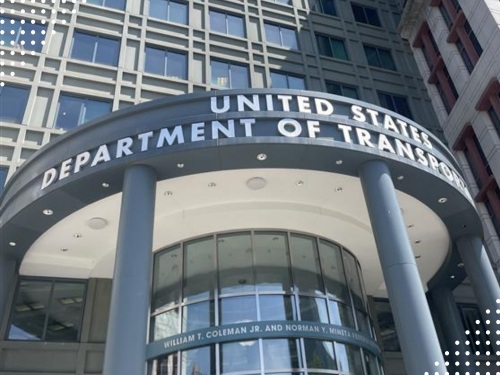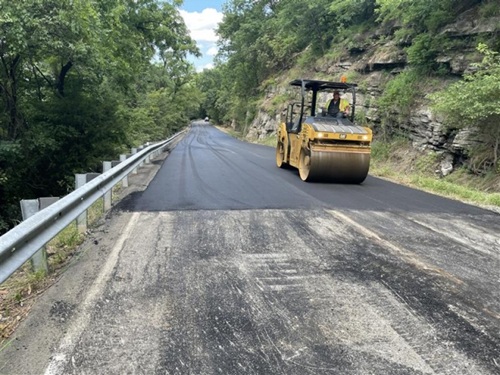A knowledge session at the American Association of State Highway and Transportation Officials 2025 Spring Meeting in Hartford, CT, explored how performance management practices could help “inform and shape” federal reauthorization policies – particularly by using such measures to help preserve state flexibility when it comes to infrastructure investment decisions.
[Above photo by AASHTO]
Moderated by Rebecka Prichard, associate partner with consulting firm McKinsey & Co., the session featured Jean Wallace, deputy commissioner and chief engineer for the Minnesota Department of Transportation; Brandye Hendrickson, deputy executive director of the Texas Department of Transportation; and Loren Doyle, director of operations for the Rhode Island Department of Transportation.
Wallace – a 17-year MnDOT veteran and vice chair of the AASHTO Committee of Performance-Based Management – said the age-old maxim of “what gets measured is managed” becomes extra critical as surface transportation funding reauthorization legislation is constructed by Congress.

“Take for example our 20-year fiscally constrained Minnesota State Highway Investment Plan,” she noted. “It is a performance-based plan. And it uses measures and targets to assess things like system performance, as well as identifying overall system needs and priorities. That’s also linked really closely with our economic analysis staff, as well as our risk management staff. And that’s really deliberate because we recognize that kind of yin yang, the importance of performance and risk together. What risks are going to prevent you from meeting the performance objectives that you set for yourself? Those risks can then be managed appropriately. We often refer to this as the ‘three-legged stool’ of performance management, asset management and risk management.”
Wallace – who also worked for the Federal Highway Administration for 14 years – noted that one of the big concerns for state departments of transportation is that the performance metrics they develop for their systems may not align with the metrics used at the federal level.
“We use our performance measures to help tell the story of how our residents can get where they need to go quickly, reliably, and efficiently,” she noted. “Now, how do such performance measures impact reauthorization? They should emphasize the need for formula funding and where, with reliable data, the funding gaps are. This ensures that we are investing in the right places, in the right amounts, to close those gaps. Because, as I like to say, the biggest room in the house is the room for improvement.”
TxDOT’s Hendrickson noted her agency is legislatively required to incorporate performance management into its project selection process. “We also are required to submit an annual report to the legislature on system performance,” she added. “What drives our performance management process at the highest level is our long-range transportation plan; one that includes performance measures from both tactical and strategic perspectives. All of that together drives our organizational decision-making process.”

A longtime veteran of the Indiana Department of Transportation – who also served at FHWA as acting administrator and with AASHTO as deputy director before joining TxDOT in 2021 – Hendrickson said “every aspect” of TxDOT uses performance measures primarily to ensure that the agency’s business decisions and infrastructure investments produce “real results” for Texas residents. “And we’re committed, as an executive team, to making sure we keep track of and use all those metrics,” she stressed.
Those measures, Hendrickson noted, are crucial for targeting reliable travel times not just for people but for freight movements well – and not just in Texas but across the nation. “We really use that data to drive investments decisions, and the data shows us the results, too; for while our state’s population is exploding, traffic congestion is mostly holding at the same level,” she said.
This is where the data helps tout the virtue of flexibility within the federal formula program, for “what works in Minnesota may not be what we need in Texas, based on our performance measures,” Hendrickson said. “We may need to expand the flexibility and eligibility in different programs to meet state [transportation] priorities. Formula allows for more thoughtful investments, based on performance data.”

RIDOT’s Doyle echoed Hendrickson’s sentiment on the importance of performance management and the data it produces.
“Performance management is in every conversation we have, especially in terms of keeping projects on time and on budget – that is the biggest metric we have and it helps tremendously when we go to the legislature for funding,” she said.
“Our performance metric feeds our 10-year transportation plan, which is very detailed; it has over 700 projects and we can, at any moment, switch a project out and see how that will affect the system’s overall performance metric, whether it’s pavement life, whether it’s bridge capacity, etc. Also, as part of recent [state] legislation, we must produce a quarterly report that goes in detail about each performance metric we have – to the point where we show individual bridge deck condition.”
The key to using that data in terms of reauthorization, Doyle said, is that it displays many funding “buckets” that can’t be really used in certain areas – usually areas that need them the most. “That is why funding flexibility is important,” she explained. “We set our transportation plan for 10 years, so there is not a lot of wiggle room. Performance management helps us stick to our plan, establishing a list of projects with expected outcomes and where future funding can help them.”
 Nation
Nation


